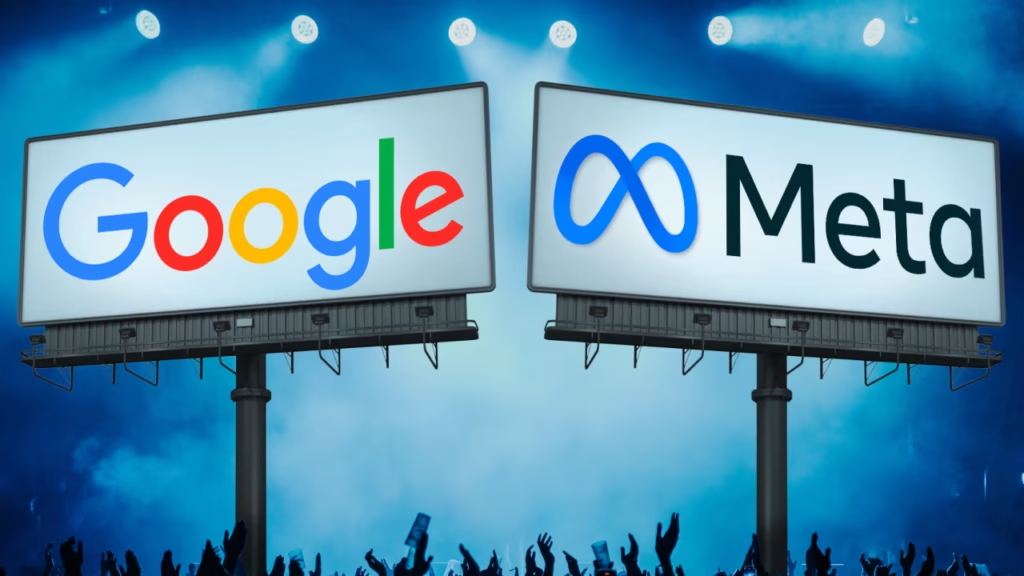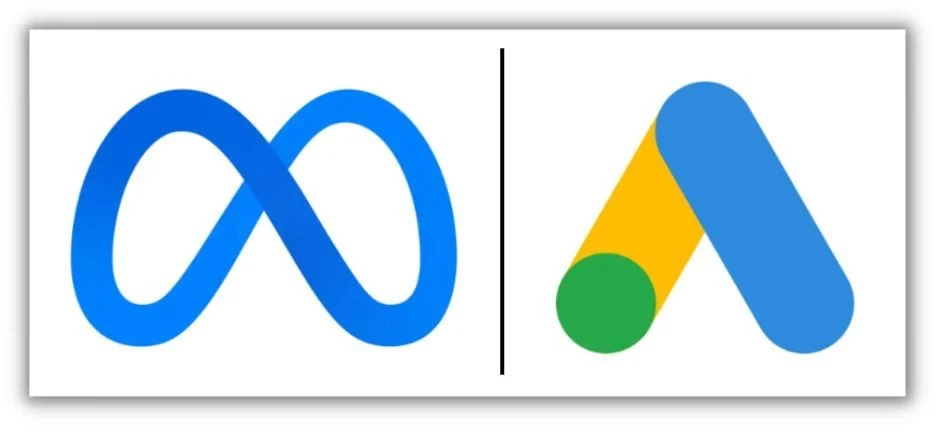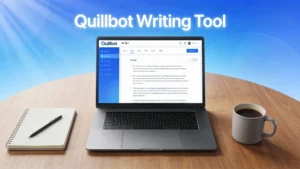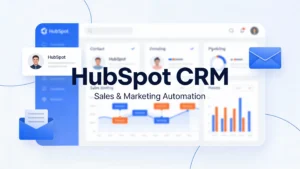Google Ads vs Meta Ads: Which Platform Delivers Better ROI in Digital Marketing?
Posted On October 31st, 2025
Array
In today’s competitive digital marketing world, choosing the right advertising platform is crucial. When it comes to Google Ads, Meta Ads, digital marketing, and online ads, every marketer wants to know which one delivers better ROI. Both Google and Meta have dominated the advertising space for years, but their methods, audiences, and results differ significantly. In this blog, we’ll dive deep into Google Ads vs Meta Ads, comparing them in every aspect — reach, targeting, cost, engagement, analytics, and conversion rate — to help you find which platform truly delivers the best ROI in digital marketing.
Understanding Google Ads in Digital Marketing
Google Ads is one of the most powerful tools in digital marketing. It allows businesses to place their ads across Google Search, YouTube, Gmail, and millions of partner websites. The biggest advantage of Google Ads lies in intent-based marketing. When users search for a product or service, your ad appears directly in front of them, making it a perfect match for high-intent audiences.
How Google Ads Works
Google Ads functions through a pay-per-click (PPC) model. Advertisers bid on specific keywords that their target customers search for. When someone types those keywords, Google runs an instant auction to decide whose ad gets displayed. The combination of bid amount, ad quality, and relevance determines the winner. This ensures that only the most relevant and high-quality ads reach users.
Strengths of Google Ads in Digital Marketing
- Massive Reach: Google dominates global search traffic, reaching over 90% of internet users.
- Intent-Driven Marketing: Users searching on Google already have strong buying intent.
- Accurate Keyword Targeting: You can choose who sees your ad based on keywords, demographics, and locations.
- Diverse Ad Formats: From search to display to video, Google covers every content type.
- Data-Driven Insights: Google Ads provides deep analytics and tracking tools.
Weaknesses of Google Ads
While Google Ads is powerful, it’s not perfect. Competition is high, especially in industries like finance, real estate, and e-commerce. The cost-per-click (CPC) can be expensive, and managing campaigns requires experience and continuous optimization.

Understanding Meta Ads in Digital Marketing
Meta Ads (formerly Facebook Ads) operate across Facebook, Instagram, Messenger, and the Audience Network. Meta Ads focus on interest-based marketing, meaning they target users based on their behaviors, interests, and online activities. This makes Meta Ads ideal for brand awareness and social engagement.
How Meta Ads Work
Meta Ads use detailed audience data collected across social platforms. Advertisers create campaigns by choosing objectives like awareness, traffic, engagement, or conversions. Then, Meta’s AI system optimizes delivery to show ads to users most likely to take action.
Strengths of Meta Ads in Digital Marketing
- Powerful Targeting Options: Meta Ads can target audiences by age, interest, location, lifestyle, and even purchase behavior.
- Visual Storytelling: With video, carousel, and image ads, brands can connect emotionally.
- Engagement-Focused: Meta Ads excel at building relationships through comments, shares, and likes.
- Cost-Effective: CPM (cost per thousand impressions) is often lower than Google Ads.
- Integrated with Instagram: You reach two massive platforms simultaneously.
Weaknesses of Meta Ads
While Meta Ads are great for visibility and engagement, they may not perform as well in high-intent conversions. Users on Facebook and Instagram are usually not searching for products; they’re browsing content. So, while Meta is perfect for brand building, it can be less effective for instant sales compared to Google Ads.
Google Ads vs Meta Ads: A Detailed Comparison
Let’s compare both platforms across key metrics that matter most in digital marketing.
| Aspect | Google Ads | Meta Ads |
|---|---|---|
| Platform Type | Search-based (intent-driven) | Social-based (interest-driven) |
| Audience Behavior | Users actively searching for solutions | Users casually browsing or engaging |
| Ad Formats | Text, display, shopping, video, app | Image, video, carousel, stories, reels |
| Targeting Type | Keyword + demographic targeting | Interest + behavior + lookalike targeting |
| Cost per Click (CPC) | Higher but more intent-based | Lower but less conversion-focused |
| ROI (Return on Investment) | Strong for conversions and leads | Strong for awareness and engagement |
| Analytics Tools | Google Analytics, Tag Manager | Meta Business Suite, Ads Manager |
| Best Use Case | E-commerce, B2B, lead generation | Branding, product awareness, community building |
ROI Analysis: Google Ads vs Meta Ads
When it comes to ROI, context matters. Google Ads generally deliver higher ROI for products and services that people actively search for — think insurance, travel, or electronics. Because users have intent, the conversion rate is higher.
On the other hand, Meta Ads deliver better ROI when your goal is brand awareness, engagement, or remarketing. They help you stay in front of your audience, build trust, and retarget users who’ve interacted with your brand before.
ROI Example in Digital Marketing
Imagine you run an online clothing store. Using Google Ads, you target users searching “buy denim jackets online.” These users are ready to purchase — you’ll get direct conversions but at a higher cost per click.
Using Meta Ads, you target users who like fashion content. They may not buy immediately, but they’ll remember your brand, engage with your post, and possibly purchase later through retargeting ads.
So, ROI depends on your business goal — Google Ads for instant conversions, Meta Ads for long-term brand building.
Cost Comparison: Google Ads vs Meta Ads
Cost plays a huge role in digital marketing decisions.
- Google Ads usually has higher CPC because competition is fierce for top keywords.
- Meta Ads, however, offer cheaper reach, making them great for startups or businesses with smaller budgets.
For instance:
- Google Ads CPC: $1–$5 per click (average)
- Meta Ads CPC: $0.30–$1 per click (average)
However, even if Google Ads cost more, they often convert better. Meta Ads may be cheaper per click but can require more impressions to generate the same number of conversions.

Targeting and Reach Comparison
Google Ads targets people based on what they search for. It’s ideal for capturing users at the bottom of the sales funnel.
Meta Ads targets based on who they are and what they like, perfect for reaching potential customers earlier in the funnel.
For example:
- Google shows your ad when someone searches “best digital marketing course.”
- Meta shows your ad to people interested in marketing, education, and career growth — even if they didn’t search for it.
Analytics and Tracking
In digital marketing, tracking performance is everything.
- Google Ads provides precise data through Google Analytics, showing click-through rate (CTR), conversion rate, and ROI in detail.
- Meta Ads offers insights through Meta Ads Manager, showing engagement, reach, impressions, and conversion paths.
While both have advanced analytics, Google Ads tends to be more transparent and data-driven for conversion optimization.
Ad Formats and Creativity
- Google Ads focuses more on information: text, shopping, and responsive search ads.
- Meta Ads focuses on visuals: videos, carousels, reels, and stories.
So, if your brand relies on emotional appeal and storytelling, Meta Ads might outperform Google Ads. However, if your focus is on users who already have purchase intent, Google Ads remains unbeatable.

Which One is Better for Different Business Types
- E-commerce: Google Ads (for intent buyers), Meta Ads (for retargeting).
- Local Businesses: Google Ads (for location-based searches).
- Startups: Meta Ads (lower cost, better awareness).
- B2B Companies: Google Ads (better for leads and professional services).
- Lifestyle & Fashion Brands: Meta Ads (visual content dominance).
Case Study Insight
Many digital marketing agencies report that when combining both Google Ads and Meta Ads, ROI improves significantly.
A typical strategy looks like this:
- Use Meta Ads to raise awareness and attract new users.
- Use Google Ads to convert those users who search later.
This integration bridges both intent and interest, giving the best overall ROI.
Common Mistakes to Avoid
- Ignoring analytics — both Google and Meta provide deep insights, use them.
- Not testing ad creatives.
- Setting unclear goals.
- Using the same strategy for both platforms — they serve different purposes.
- Focusing only on CPC, not on overall ROI.
Conclusion: Google Ads vs Meta Ads — Which Is Best?
After comparing every aspect — cost, targeting, ROI, reach, analytics, and purpose — here’s the simple answer:
✅ Google Ads is best for high-intent conversions, leads, and measurable ROI.
✅ Meta Ads is best for brand awareness, engagement, and storytelling.
If your business goal is direct sales or lead generation, choose Google Ads.
If your goal is visibility, social connection, or audience engagement, choose Meta Ads.
But the smartest digital marketing strategy is combining both. Google captures buyers ready to act, while Meta nurtures audiences who will convert later. When used together, they maximize both short-term ROI and long-term brand growth.
Top Image Editing and Video Editing Tools You Can Use Online for Free! Click here to see.
Related Posts

Meta Business Suite for Instagram and Facebook: The Complete Guide for Business Growth
Posted on December 20th, 2025
Meta Business Suite is one of the most powerful tools for any business that wants to grow on Instagram and Facebook using one central dashboard. In today’s digital world,...
Read More →
Canva: The Ultimate Online Design and Graphics Tool for Everyone
Posted on December 20th, 2025
Canva is one of the most popular online design and graphics tools in the world today. If you want to create professional designs without complex software, Canva is the...
Read More →
Quillbot: The SEO Writing Tool to Transform Your Content Strategy
Posted on December 18th, 2025
Imagine crafting blog posts that not only captivate readers but also climb Google rankings effortlessly. That’s the magic of Quillbot, the go-to SEO writing tool revolutionizing how creators approach...
Read More →
HubSpot CRM: The Ultimate Guide to Revolutionizing Your Sales and Marketing Strategy
Posted on December 17th, 2025
Are you struggling to manage customer relationships effectively? HubSpot CRM is transforming how businesses handle sales, marketing, and customer interactions. This powerful CRM platform combines Google-level analytics with seamless...
Read More →© All Copyright Reserved japjitravel.com
Leave a Comment :